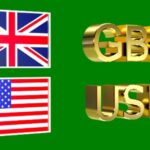The EURUSD pair climbed close to 1.1730 in Monday’s European session, buoyed by a weaker US Dollar and stronger German inflation data. Markets remain focused on the growing possibility that the Federal Reserve (Fed) will resume its rate-cut cycle in September, putting sustained pressure on the Greenback.
The US Dollar Index (DXY) is hovering near 97.60, its lowest level since August, signaling broad-based Dollar softness.
Fed Dovish Expectations Drive USD Weakness
According to the CME FedWatch tool, markets are pricing in an 87.6% chance of a 25-basis-point rate cut at the September Fed meeting. This shift comes amid:
Labor Market Concerns: Rising layoffs and cooling job creation are sparking fears of a slowdown.
Tariff Shock: President Trump’s tariffs have heightened economic uncertainty, prompting calls for policy easing.
Comments from Fed Chair Jerome Powell and other FOMC members highlighting labor market risks have strengthened the dovish narrative.
Key US Data in Focus This Week
With US markets closed for Labor Day, traders are looking ahead to a data-packed week:
JOLTS Job Openings (July) – for labor demand insights.
ADP Employment Change (August) – a preview of private payroll trends.
Nonfarm Payrolls (NFP) (August) – the most critical labor report for Fed guidance.
ISM Manufacturing and Services PMIs (August) – gauges of economic health.
Weak data could reinforce the case for deeper Fed cuts, further pressuring the Dollar.
German Inflation Boosts Euro Sentiment
On the Euro side, the currency found support after German Harmonized Index of Consumer Prices (HICP) data for August exceeded expectations:
Annual HICP: 2.1% (vs. 2.0% expected, 1.8% prior)
Monthly HICP: 0.1% (vs. flat forecast)
The stronger data reduces the urgency for the ECB to cut rates, giving the Euro a lift against the Dollar.
Traders now await Eurozone-wide HICP data, due Tuesday, expected to show headline inflation steady at 2.0% and core inflation rising to 2.2%.
Eurozone Economic Signals Improve
Final HCOB Manufacturing PMI data for August came in at 50.7, slightly higher than the preliminary 50.5 reading. The improvement signals modest recovery in industrial activity, supporting the Euro’s underlying strength.
French Political and Bond Market Stress
Political risks in France are also in focus. President Emmanuel Macron confirmed his intention to serve until 2027, despite a confidence vote on a €44 billion budget package scheduled for September 8.
However, 30-year French bond yields have surged to 4.46%, their highest level since 2011, reflecting investor unease over fiscal pressures. ECB President Christine Lagarde reassured markets that the French banking system remains stable.
US Political Turmoil Adds Pressure on Dollar
The Dollar’s weakness is compounded by political uncertainty:
Tariff Ruling: A US appeals court ruled that President Trump’s tariffs were “illegal,” challenging his trade strategy.
Fed Governance Crisis: The firing of Fed Governor Lisa Cook over mortgage allegations has raised questions over the Fed’s independence, undermining investor confidence.
EURUSD Technical Outlook
Technically, EURUSD shows a bullish bias:
Resistance: 1.1750, followed by 1.1800
Support: 1.1680, then 1.1650
Momentum: Indicators point to continued upside, though near-term pullbacks are possible if data surprises to the upside for the Dollar.
Market Sentiment
Speculative positioning data shows moderate bullish bets on the Euro, suggesting room for further gains if US economic indicators underperform or Eurozone data continues to show resilience.
Key Events to Watch
Date Event Market Impact
Sep 2 Eurozone HICP (Prelim) ECB policy expectations
Sep 3 US ISM Manufacturing PMI Industrial activity outlook
Sep 4 ADP Employment Change Labor market preview
Sep 5 US Nonfarm Payrolls Major Fed policy driver
Sep 6 ISM Services PMI US economy sentiment
Short-Term Bias: Bullish
If upcoming US data confirms slowing job growth and weak business activity, EURUSD could break above 1.1750 and aim for 1.1800. Conversely, strong NFP or upbeat PMI readings could trigger a pullback toward 1.1650.
Conclusion
The EURUSD pair is benefiting from a combination of US Dollar weakness, dovish Fed bets, and resilient Eurozone data. With key labor and inflation data on deck, traders should prepare for heightened volatility this week.
For now, the bias remains upward, with buyers targeting the 1.1750–1.1800 zone as long as the Fed narrative stays dovish and Eurozone fundamentals hold firm.









